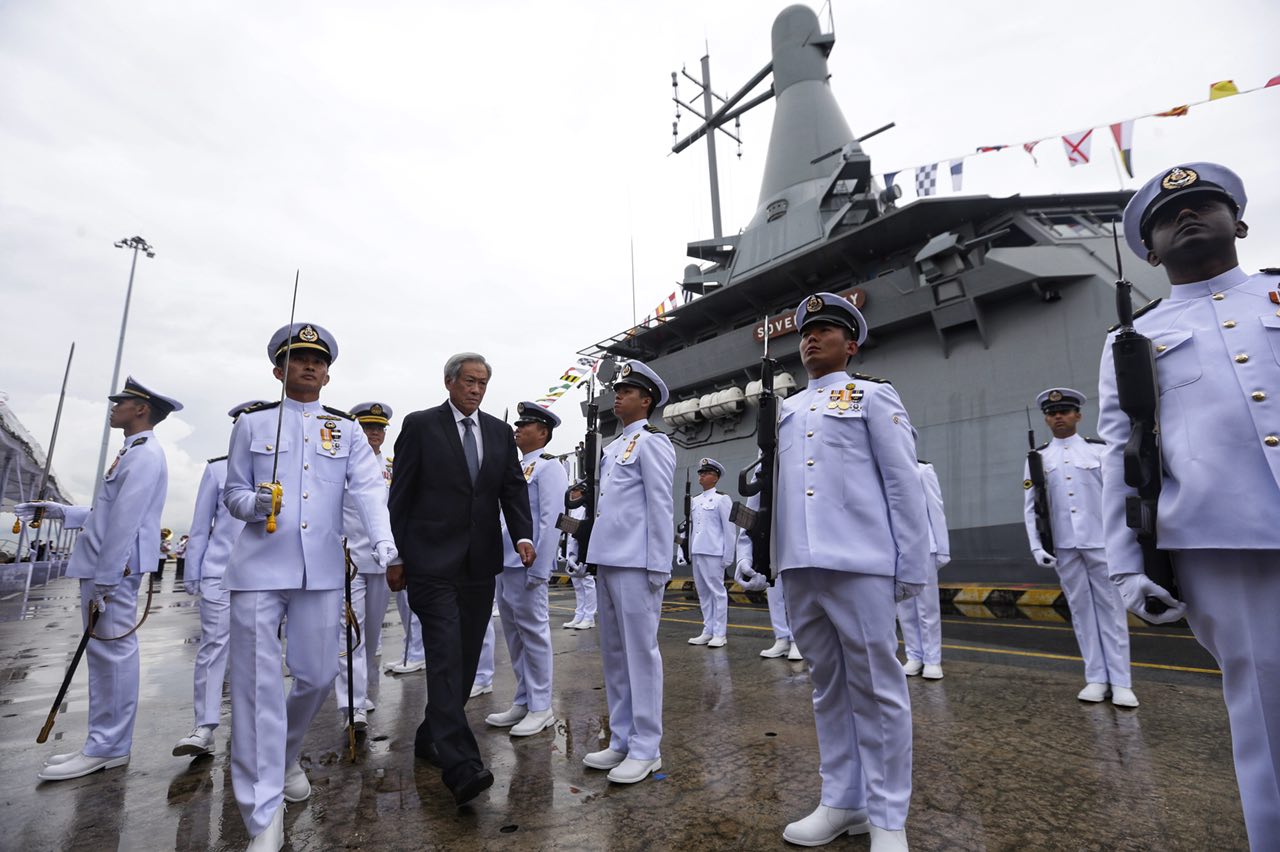RSN gears up amid regional challenges, with two new littoral mission vessels turning operational
Sign up now: Get ST's newsletters delivered to your inbox

Defence Minister Ng Eng Hen inspects the parade during the commissioning of RSS Sovereignty and RSS Unity at Changi Naval Base.
ST PHOTO: KEVIN LIM
Follow topic:
SINGAPORE - Warship RSS Independence has begun its first overseas deployment since turning operational this May, with two other Littoral Mission Vessels (LMVs) ready for action too as the Republic of Singapore Navy (RSN) gears up amid growing regional challenges.
At a ceremony to commission RSS Unity and RSS Sovereignty on Tuesday (Nov 14), Defence Minister Ng Eng Hen said the two locally-built and high-tech warships reflect a "quantum jump" in capabilities over the patrol vessels which they replace.
More importantly, the new ships, sailing with other navies, will enhance the RSN's professional standing in a region where the "tempo of operations and the area of operations have expanded considerably in the past decade", he added.
"Going forward, the demands on our RSN will increase. Part of this reflects both the rising trade, as well as the military build-up of regional navies in our surrounding waters," said Dr Ng, adding that both the South China Sea and Strait of Malacca are key sea lines of communication.
He added that seaborne trade in the Malacca Straits has grown steadily yearly, alongside a rising recognition from non-Asean countries such as the United States and China that the seas in the region are "critical to global trade and security".
Dr Ng explained that their interest was one reason why the inaugural International Maritime Review hosted by the RSN in May this year to mark the navy's 50th anniversary saw the gathering of 44 nations with 46 warships and four aircraft.
"They came because of the respect they have for RSN, but also because they recognise the strategic geopolitics in these potentially contested waters," said Dr Ng, in a reference to the territorial disputes in the waters, which include overlapping claims between China, Taiwan and four Asean states in the South China Sea.
The two LMVs are the latest to turn fully operational, with five more expected to do so by 2020. In total, Singapore will have eight LMVs, which are meant to replace 11 Fearless-class patrol vessels, which have been in service for more than 20 years.
In his speech, Dr Ng revealed that RSS Independence has already been deployed in the first Asean Multilateral Naval Exercise, conducted from Monday (Nov 13) to Nov 22 off the coast of Thailand.
The 80m-long Independence-class LMVs are jointly developed by the RSN and the Defence Science and Technology Agency (DSTA), and equipped with technology such as advanced radars and sensors, and a 360-degree out-of-window view.
Calling the new ships a "quantum jump" over the patrol vessels, Dr Ng said the LMV's sophisticated capabilities "are a tangible expression of the advances made over three decades by RSN, DSTA and ST Engineering".
Delivering quicker and greater firepower than the patrol vessels and requiring a smaller crew of just 23 people, the LMVs have both lethal and non-lethal options to deliver calibrated responses against various threats.
LMVs in other navies typically have a 60-man crew, noted Dr Ng,during the ceremony held at the RSS Singapura-Changi Naval Base.
These ships will take part in maritime security operations, such as the multi-agency Exercise Highcrest, which ended on Oct 26.
They can also be used in humanitarian, disaster relief, and surveillance missions.
On the ship's versatility, commanding officer of RSS Unity Lieutenant-Colonel Lee Jun Meng, 36, said: "When we wanted to build a ship, we wanted to build one that could meet not just current requirements, but even for future requirements we have not foreseen."
Some functions that could be installed include unmanned systems, surgical theatres, as well as the ability to launch a helicopter, he added.

